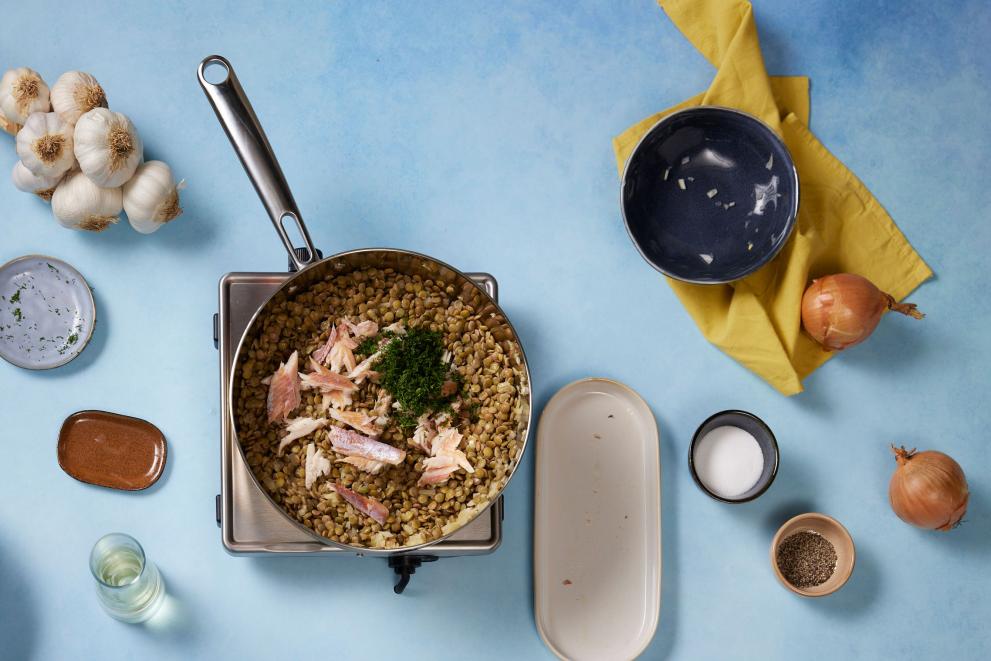Ingredients

- 50 g Emmenthal cheese, grated
- Pepper
Shortcrust pastry
- 250 g flour
- 1 tsp salt
- 125 g cold butter
- 1 egg
- 35 ml cold water

Filling
- 200 g green lentils (or 450 g cooked)
- 1 onion, chopped
- 1 garlic clove, crushed
- 20 g butter
- 50 ml white wine
- 2 tbsp parsley, chopped
- 3 tbsp dill, chopped
- 2 tbsp strong mustard
- 150 g smoked trout slices
- ¼ tsp salt
- Pepper
Custard
- 225 ml cream
- 3 eggs
- 50 g parmesan
- ¼ tsp salt
- Lemon zest from ¼ lemon
Preparation

- Put the flour and salt in a bowl. Cut the butter into cubes and add it to the flour. Rub the mixture between your hands until it turns into fine breadcrumbs.
- Add the egg and water and knead or mix into a dough.
- Shape the pastry into a disc, wrap it in cling film and refrigerate for 2 hours.
- Rinse the lentils and add them to a saucepan of boiling water. Cook for 20 minutes. Drain and cool under a running tap. Set aside.
- Fry the butter and onions in a frying pan for 5 minutes. Add the garlic and fry for 1 minute. Then pour in the white wine and cook for another minute.
- Take off the heat add the lentils, parsley and dill.
- Cut the trout into small slices. Stir through the lentils and season with salt and pepper.
- Preheat the oven to 170°C fan bake.
- Grease a 30 cm and a 12 cm quiche tin.
- Take the pastry out of the fridge and roll it out thinly on a floured work surface, so that the dough is slightly wider than the big quiche tin. Lift the dough into the tin, press down lightly and cut off any excess dough. Roll out the remaining dough again and place in the small quiche tin.
- Prick the pastry base a few times with a fork. Brush the mustard all over the base.
- Distribute the lentil filling over the pastry and pour the egg custard over it.
- Sprinkle with cheese and bake the quiche in the preheated oven for 35 minutes. When it’s ready, serve with green salad with radish and capers.
Rainbow trout

- The Rainbow trout in Europe are native to the North Pacific Basin. They were first bred in captivity in 1870 and are now well domesticated all around the world.
- Rainbow trout can have two different fates when they are born. They can either stay in the river for their whole life, or go to the sea to grow faster. This way, a population of trout always stays in the sea, so if there is a problem in the river (flood or drought for example), some trout will survive.
- Writer Ernest Hemingway was a big fan of fly fishing for rainbow trout. He wrote short stories and articles about them.
- Females produce from 700 to 4,000 eggs per spawning event.

